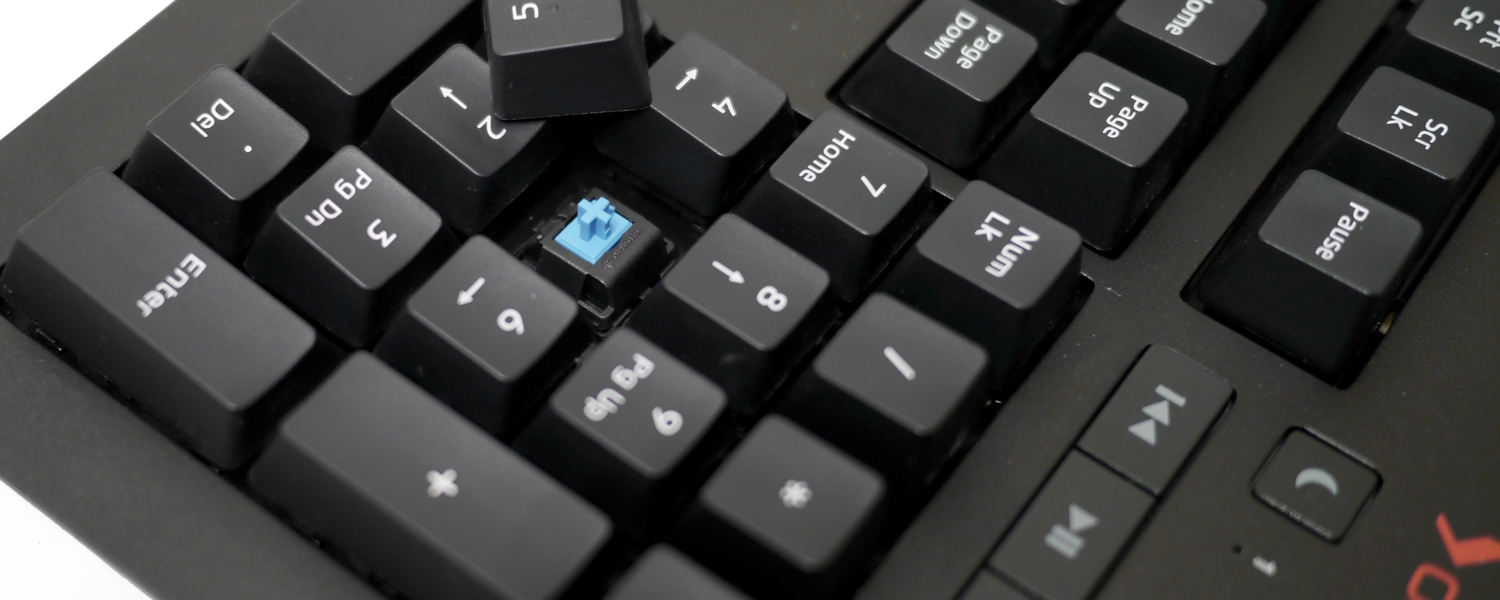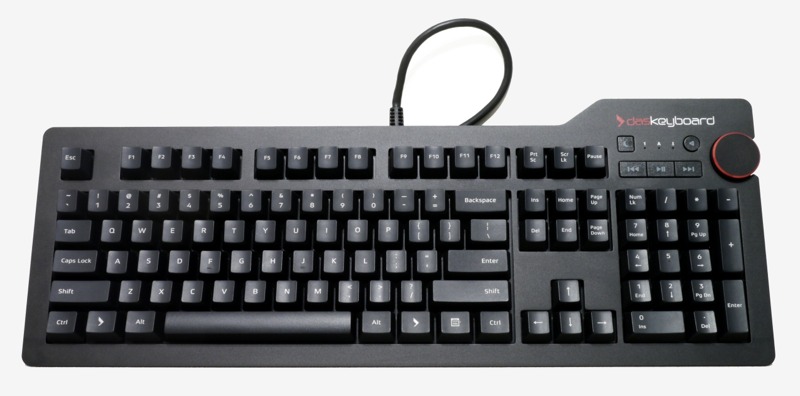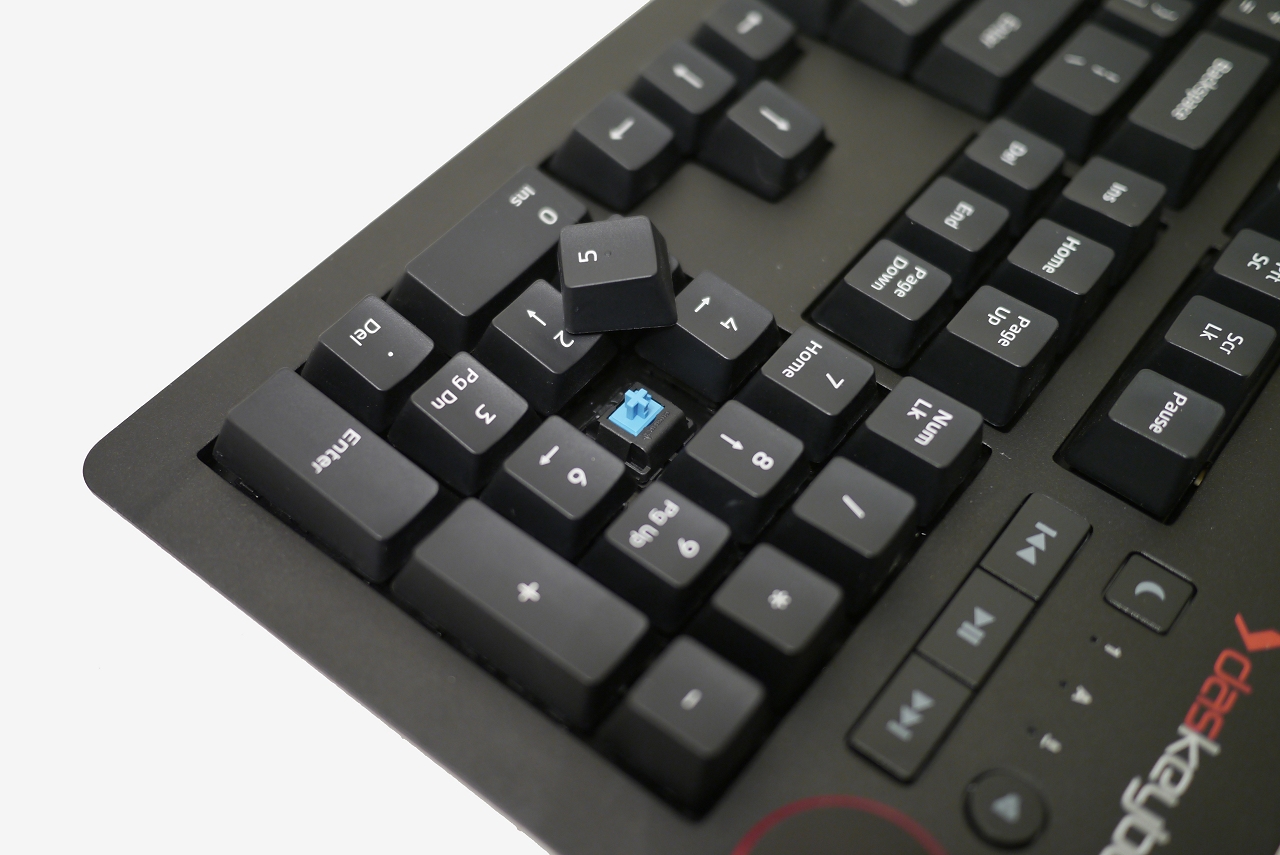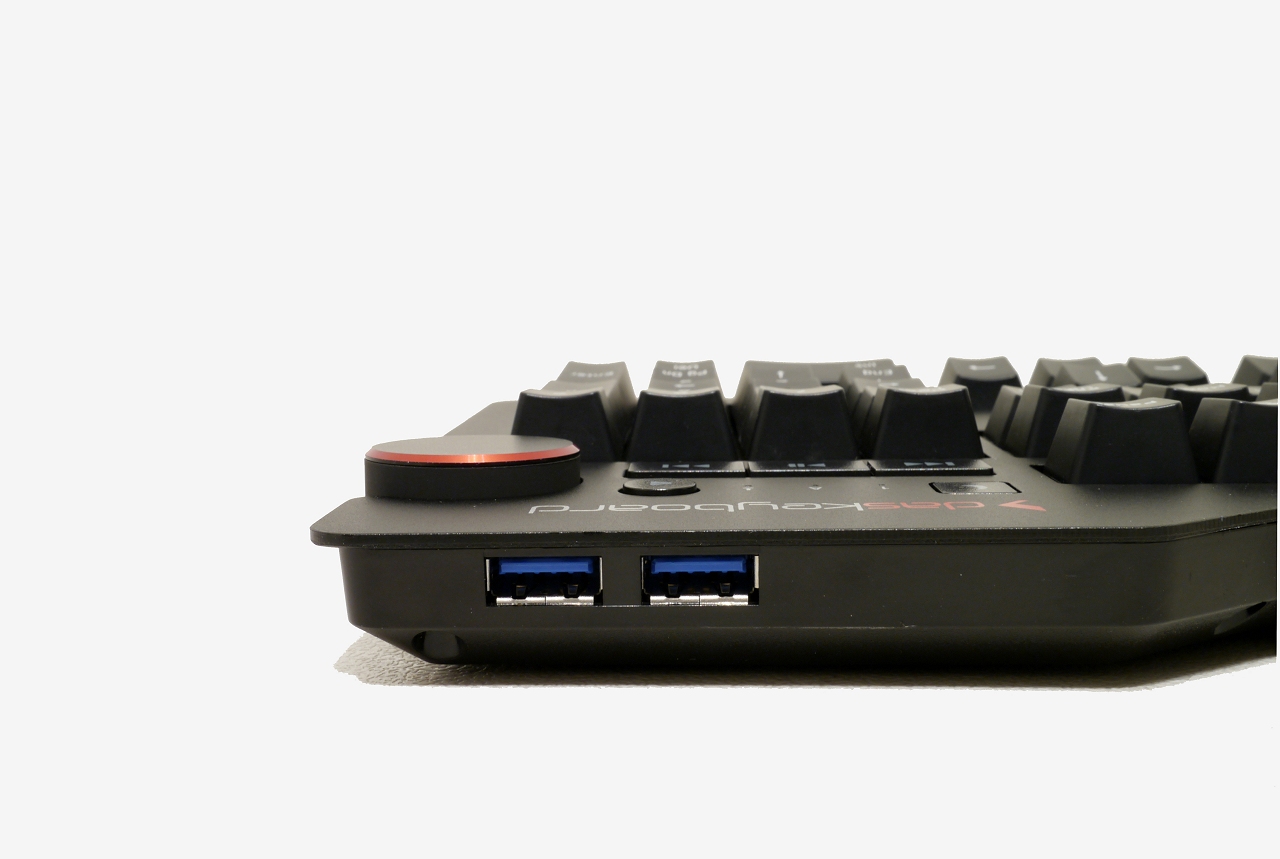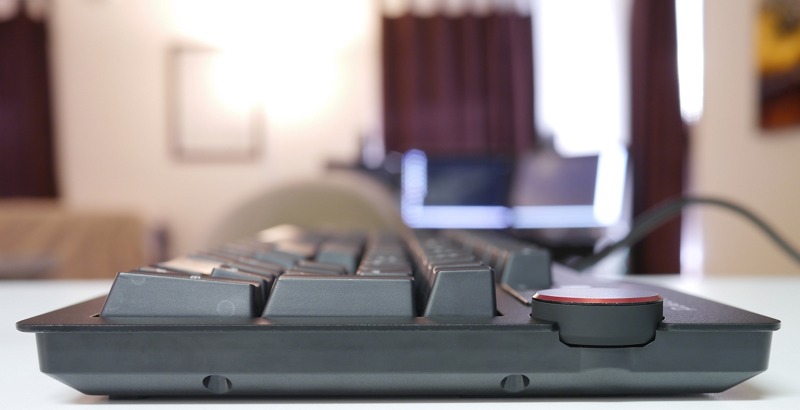Have you ever noticed that people tend to invest a disproportionate amount of money in items that consume the most amount of time in their lives? For example, we spend a third of our life asleep yet I know several people that paid a hundred bucks or less on a mattress they've owned for more than a decade.
Or how about those whose jobs require them to use a computer for eight hours or more each day yet they type away on a clunky old keyboard with sticking keys that probably requires a PS/2 connection.
I could go on and on with the point always being the same: we often ignore simple things that could truly make our lives better. In both the mattress and keyboard example, investing a bit more money over bargain basement options will no doubt result in less stress and increased productivity.
Das Keyboard 4 Professional "Clicky"
$169
- Cherry MX key switches with gold contacts
- Dedicated media control with oversized volume knob
- 2-Port USB 3.0 SuperSpeed hub
- Instant sleep button to save energy
- Anodized aluminium top panel
- Laser-etched key cap inscriptions
- 104-key US layout, 105-key for UK, NO, and DE
- Supports full n-key rollover (NKRO) over USB
- Firmware updatable
- Extra long 6.5 ft (201 cm) USB cable with single USB type-A connector
- Dimensions: 18 x 6.8 x .80 inches
- Weight: 2.9 lbs (1.3 kg)
I can't offer much assistance if you're in the market for a new mattress but if it's a mechanical keyboard you're interested in - and specifically, Metadot's new Das Keyboard 4 - then I can certainly lend a hand.
Metadot is arguably responsible for pioneering the commercial mechanical keyboard market, much like OCZ did with solid state drives. We've seen a number of revisions and competitors hit the scene since the original Das Keyboard launched in 2005, but their latest offering is an order of magnitude better than previous generations, at least according to CEO Daniel Guermeur.
The Das Keyboard 4 was announced in March 2014 and despite a number of new features, the board stays true to its roots in terms of aesthetics and its 104-key layout. Those familiar with previous Das offerings will immediately zero in on the new oversized volume knob and dedicated media controls on the top right side just above the number pad.
Media controls include buttons to play, rewind and fast-forward as well as a mute button and another to put the computer to sleep. Tiny blue LEDs indicate the status of the num lock, scroll lock and caps lock functions. The lights are bright but they are positioned to project the beam straight up - or in other words, they won't blind you.
Metadot went with a 1.8mm, powder-coated aluminum top panel. Previous iterations used a plastic-based glossy panel which proved to be a nightmare to keep clean. The matte black finish eliminates that headache while at the same time offering improved durability and a more subtle look - something that won't go unnoticed if you opt for the blank keycaps of the Ultimate edition.
The Das Keyboard 4 Professional unit we have here today features white, laser-etched inscriptions with a new font designed for ease of reading while both models use black thermoplastic keycaps.
Buyers of either board will be able to choose between one of two different gold-plated switches, either the Cherry MX brown or Cherry MX blue. Both switches share some common specifications such as 4mm of total travel, 2mm of pre-travel, an operating life of 50 million actuations and a bounce time that's less than or equal to 5ms.
The brown switches offer a softer feel and require an actuation force of just 45 grams. The blue switches have an actuation force rating of 50 grams and are typically the type that most people associate with mechanical keyboards due to their clicky tactile and audible nature. Our review sample is equipped with the blue variety.
Gamers will appreciate full n-key rollover support over USB. This feature is disabled by default to ensure full host system compatibility but can be toggled by pressing Shift + Mute. Elsewhere, the board features a two-port USB 3.0 hub on the top edge near the media controls that is backwards compatible with all USB 2.0 / 1.1 devices. It goes without saying that you'll need to connect the board to a USB 3.0 port on your computer for the hub to function at full speed.
Speaking of connectivity, the board is equipped with a non-removable USB cable measuring 6.6 feet in length. The cable itself is one of the thicker I've seen on an input device and combined with the strain relief fitting on the keyboard end, should last the life of the board. No drivers are required - simply connect it to your Windows, Mac OS, Linux or Chrome OS system and you're all set.
The bottom housing of the Das 4 is constructed of formed thermoplastic that mates with the aluminum top panel via a series of hex screws. Four rubberized feet keep the board firmly planted in place but you may notice there aren't any feet to incline the board. Instead, the Das 4 employs a detachable, magnetic footbar that elevates the board four degrees in the front and will eliminate the risk of fold-out feet breaking off. The footbar also doubles as a 16-inch ruler because, well, why not?
The board measures 18 inches (458mm) x 6.8 inches (172mm) x .80 inches (20.2mm) when not elevated and 1.2 inches (31mm) with the footbar in place; it weighs in at 2.9 pounds (1.39kg). It's a hefty board but then again, weight really isn't a concern when discussing a keyboard unless perhaps you frequent LAN parties.
Feature set aside, the true test of a keyboard comes down to how it performs while typing. I've been using the Das 4 for just shy of one month as my primary keyboard, replacing the Logitech G510 that's sat on my desk for well over three years.
There's always a bit of a learning curve when migrating to a new keyboard (for me, at least) and the Das 4 was no different. As I found out about half way into my time with the Das and had expected all along, the reason I wasn't immediately able to adjust to typing on it was because a wrist rest wasn't included.
Metadot cites proper desk ergonomics as the reason they don't include a wrist rest with the board or even offer one as an added accessory. The keys are even laid out in an overall concave manner to help promote proper typing. I fully understand this stance but for someone that's typed with a wrist rest for more than 15 years, switching to "proper" technique at this stage in the game is out of the question.
I purchased a 3M wrist rest on the advice of a friend and immediatly noticed a drastic improvement in overall comfort and accuracy. The wrist rest was around $20 but well worth the money as it's the best third-party unit I've ever used, hands down.
I won't knock Das for promoting proper typing technique, but I do wish they would offer a solution designed specifically for their boards for people like me that really need one.
The Cherry MX blue key switches are as described, meaning they have a very audible click to go along with the tactile feedback each time you press a key. They click on the way down and there's even a tinny spring-like sound on the rebound. There's something reassuring about hearing each click, almost as if it motivates me to type quicker or instills confidence.
Be warned, however. If you share small living quarters with others, this board will no doubt lead to some arguments (or at the very least, some resentment). There's no other way to put it, it's loud compared to a "regular" keyboard.
Aside from my comment on wrist rest options, there are a couple of things I'd add or change about the Das Keyboard 4, starting with macro keys. The Logitech it replaced included a bank of 18 macro keys on the left side with three different profiles for a total of 54 different macros. I certainly don't need near that many but even half a dozen or so dedicated macro keys would have been a nice addition. Lack of backlighting also seems like an unfair omission for a $169 keyboard.
Aesthetically speaking, the board is unmistakably a Das. Its overall weight will attest to the fact that it's a well-built keyboard. It offers a robust set of features with updateable firmware that improve on previous offerings and is a pleasure to type on. All of Metadot's mechanical keyboards have a one year manufacturer's warranty and a three year warranty if purchased directly from the company.
Pricing starts at $169 for the Professional edition with Cherry MX blue switches as reviewed here today. I realize that is a lot of money to spend on a keyboard but just like the mattress analogy, when you look at it as an investment versus how much time you spend using it and the potential impact it could have on your life, you may actually save yourself a lot of time and money in the long run.
I have no reservations in recommending the Das Keyboard 4 to anyone looking for a quality mechanical keyboard.
score
Pros: Another sturdy, well-built keyboard from Das with an all-new aluminium top panel and matte finish that's easier to keep clean. Integrated hub supports USB 3.0. Characteristic clicky tactile feedback makes it a pleasure to type on (available with Cherry MX brown switches for quieter operation).
Cons: The dedicated media keys are a nice addition but some macro keys would have been even nicer. Lack of backlighting seems like an unfair omission for a $169 keyboard. No wrist rest option.
